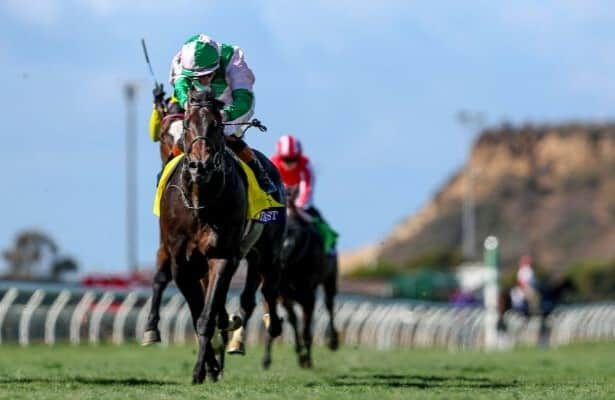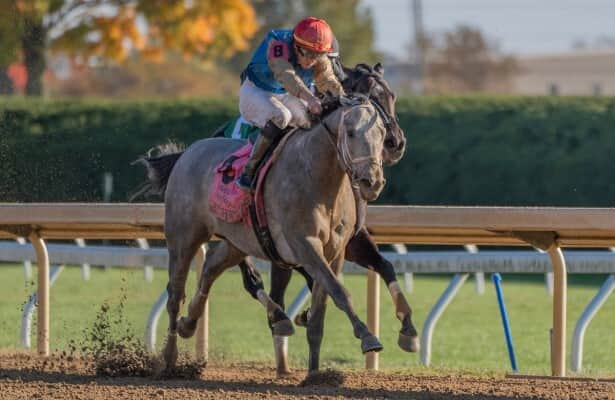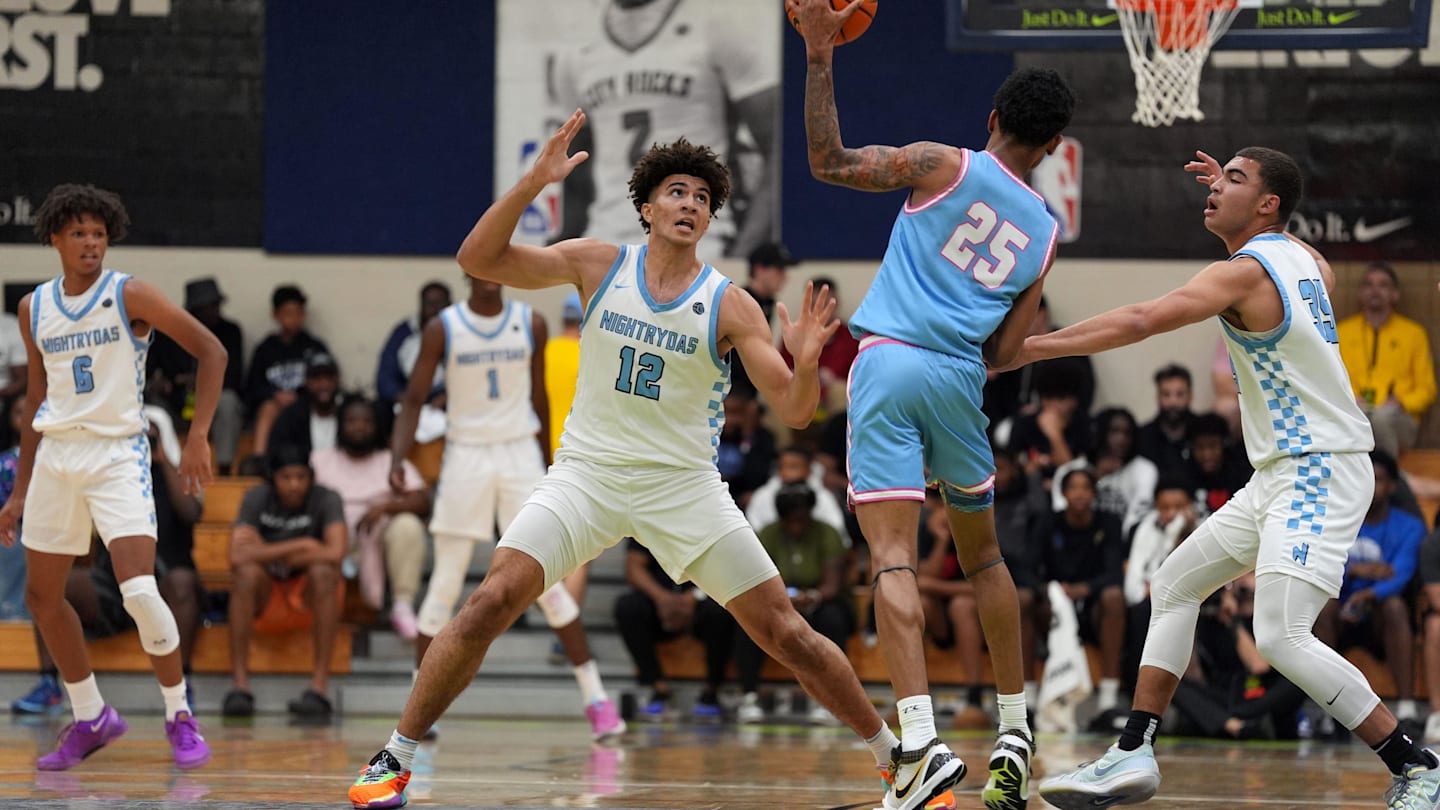The Story of a Racehorse Named Thanksgiving

Max Hirsch was a titan in the sport. He won the 1934 Travers Stakes with Observant. He trained Bold Venture, winner of the 1936 Kentucky Derby and Preakness. He was well on his way to a Hall of Fame career. He trained horses for some of the richest and most powerful Americans, including Arnold Rothstein, the wealthy gambler and infamous fixer of the 1919 World Series. In 1934, he had recently become the trainer for the King Ranch, which would soon be one of the most successful stables in America.
That year Hirsch’s daughter, Mary, made some horse racing history herself. She was the first woman in the country licensed to train Thoroughbred racehorses. Mary had grown up around horses, naturally, and rode jumpers before deciding to try her hand at training. Owners gladly handed horses over to her despite any biases against her gender because, according to the New York Times, “her father thinks enough of her judgement to consult with her.”
One owner who had no such biases was Anne Corning, wife of Congressman Parker Corning from the politically powerful Corning family in upstate New York. Parker was a horse racing fan and owned a number of horses that he kept under his wife’s name. Anne developed a passion for the sport herself, taking an active interest in them and their careers on the track. Mrs. Corning asked Mary Hirsch to train one of their horses, a bay colt named Thanksgiving.
They stabled Thanksgiving with Max Hirsch’s horses at Saratoga in the summer of 1937 in preparation for the start of his 2-year-old season. That July, before the beginning of the meet, a lightning storm wreaked havoc on the barn, striking several of the horses, including Thanksgiving. Max Hirsch felt the lightning strike his foot as he sat in his kitchen near the barn eating lunch. He looked over at the chef, who had collapsed. Hirsch knew what was happening and sprung from the table and raced to the barn. When he arrived he saw his horses stumbling around; some falling over. Thanksgiving was on the ground and out cold.
Thanksgiving would recuperate from the lightning strike and make it to the track that summer, and even showed a little promise as a 2-year-old, winning two of five starts, including a sprint on a muddy track he won by four lengths. But as a 3-year-old he struggled, not winning a single race by June. He didn’t compete in any of the Triple Crown races, instead running in races on the East Coast at New York tracks as the star 3-year-olds chased each other across the country in marquee races. Despite not winning, Thanksgiving was raising some eyebrows all the same. Joe Palmer listed Thanksgiving among the year’s best horses. Elizabeth Grinnell agreed, writing in Country Life and the Sportsman, “Although he may not be the fastest, I think Thanksgiving may be the most interesting of the lot. Within five weeks this smallish bay colt, in four successive starts at three different tracks, has equaled two track records and broken two others without winning a single race.”
It was true. Thanksgiving had run third in the Yankee Handicap at Suffolk Downs, but at a speed that equaled the track record, which was broken by the winner of the race, Cravat. In July, in the Empire City Handicap in Yonkers, N.Y., Thanksgiving raced against Stagehand, one of the most popular horses in the country, and the winner of the Santa Anita Derby. Stagehand won that race, but Thanksgiving was only a half-length behind him, and both horses broke the track record. Later in the Butler Handicap, this time against older horses, Thanksgiving would beat all other 3-year-olds in the race but lose by a length to the winner, Esposa. Again, the top three finishers all broke the previous track record. Then in late July at Saratoga, Mary Hirsch would once again enter Thanksgiving in a handicap race against older horses, the American Legion. The winner of that race, Airflame, broke a track record that had stood for 18 years. Thanksgiving, who finished a head bob behind the older Airflame, would break the record as well, but once again miss the winner’s circle.
While the top 3-year-olds were putting up inconsistent finishes throughout the year, Palmer and Grinnell saw in Thanksgiving something that betrayed the horse’s pitiful win record. Thanksgiving was consistently there among the winners in each and every race, no matter how fast those winners happened to run. And Thanksgiving’s races that summer proved that if you wanted to beat him, you’d need to run very, very fast.
Mary Hirsch and Anne Corning entered Thanksgiving in the 1938 Travers Stakes at Saratoga. He’d have an opportunity to run at his past foes, this time all in one race, as Stagehand, Cravat, and several other 3-year-old graded stakes winners were entered in the field of nine. Bull Lea, winner of the Kenner Stakes at Saratoga, was the favorite at 6-to-5. Stagehand was the second choice at 7-to-2. The bettors sent Thanksgiving off at 4-to-1, largely on the horse’s popularity as an underdog and a local product of upstate New York, no doubt.
Thanksgiving broke well and led the field around both turns, but the fans weren’t convinced he could keep the lead. Stagehand was known as a deep closer, frequently rallying from the back of the pack, which is exactly where he was at the top of the Saratoga stretch. But as he began his rally, he was joined by Jolly Tar, a 60-to-1 longshot who had also been trailing the field and was now coming up the rail. Thanksgiving, for his part, picked up his pace in the stretch as well. He had set such a fast pace the first five furlongs that the other horses began to tire. But his jockey, Eddie Arcaro, knew that Thanksgiving wasn’t finished running, urging him forward. Thanksgiving would finish six lengths ahead of the rest of the field, with Jolly Tar making it up for second ahead of the rest of the star-studded field. Once again Saratoga kept its reputation as a graveyard of favorites. Mary Hirsch made history as the first female to train a winner of the race, a feat duplicated 85 years later by Jena Antonucci with Arcangelo in 2023. The Jockey Club would receive a flood of applications for training licenses from women in the wake of Mary Hirsch’s success. And Thanksgiving would prove once and for all that lightning can indeed strike in the same place twice.
Editor’s note: This story was originally published in November 2017 and has been updated.
Related
Hong Kong Sprint: Trainer says Starlust is up to the…
Photo: Alex Evers / Eclipse Sportswire British trainer Ralph Beckett admits local star Ka Ying Rising looks an “absolute monster”
Clark Stakes odds and analysis: Who can challenge Hit Show?
Photo: Jessica Morgan / Eclipse Sportswire Friday’s Grade 2, $600,000 Clark Stakes at Churchill Downs drew a field of 10 who will ra
Churchill Downs Picks: 1/ST BET Horse Racing Predictions for November…
1/ST BET Horse Racing Predictions: We are excited to announce a renewed partnership with the fine folks and handicappers at 1/ST BET. Jeremy Plonk and Jeff
A Look at FanDuel’s Naming Rights Deal With Diamond
Racing fans may have noticed the addition of television channels carrying the "FanDuel" name to their cable or streaming service over the past month. While












